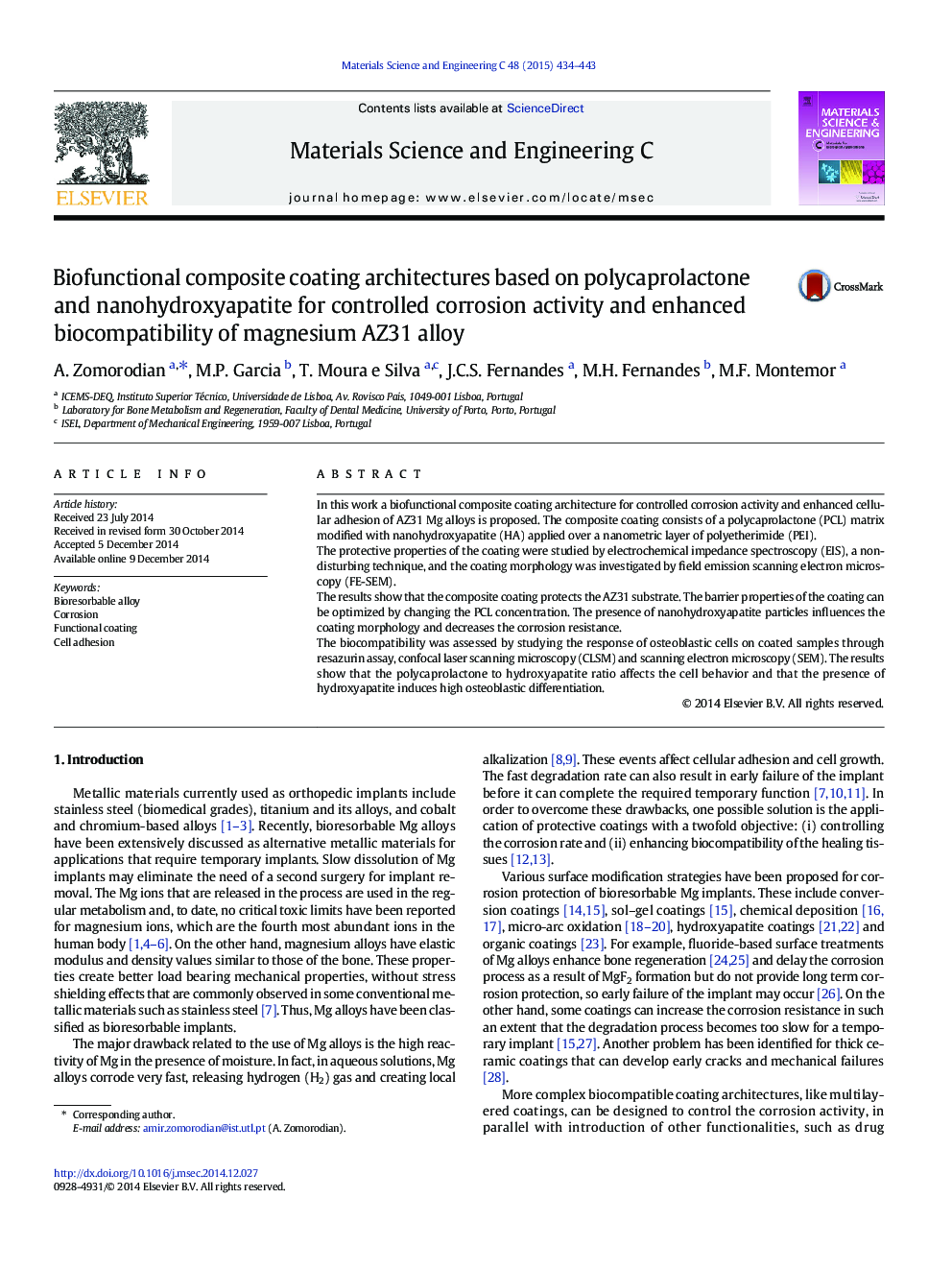| Article ID | Journal | Published Year | Pages | File Type |
|---|---|---|---|---|
| 1428476 | Materials Science and Engineering: C | 2015 | 10 Pages |
•A biofunctional coating architecture for bioresorbable AZ31 Mg alloys is proposed.•The composite coating provides corrosion protection of the bare material.•The coating enhances alkaline phosphatase activity of osteoblastic cells.•The presence of hydroxyapatite results in higher osteoblastic differentiation.
In this work a biofunctional composite coating architecture for controlled corrosion activity and enhanced cellular adhesion of AZ31 Mg alloys is proposed. The composite coating consists of a polycaprolactone (PCL) matrix modified with nanohydroxyapatite (HA) applied over a nanometric layer of polyetherimide (PEI).The protective properties of the coating were studied by electrochemical impedance spectroscopy (EIS), a non-disturbing technique, and the coating morphology was investigated by field emission scanning electron microscopy (FE-SEM).The results show that the composite coating protects the AZ31 substrate. The barrier properties of the coating can be optimized by changing the PCL concentration. The presence of nanohydroxyapatite particles influences the coating morphology and decreases the corrosion resistance.The biocompatibility was assessed by studying the response of osteoblastic cells on coated samples through resazurin assay, confocal laser scanning microscopy (CLSM) and scanning electron microscopy (SEM). The results show that the polycaprolactone to hydroxyapatite ratio affects the cell behavior and that the presence of hydroxyapatite induces high osteoblastic differentiation.
